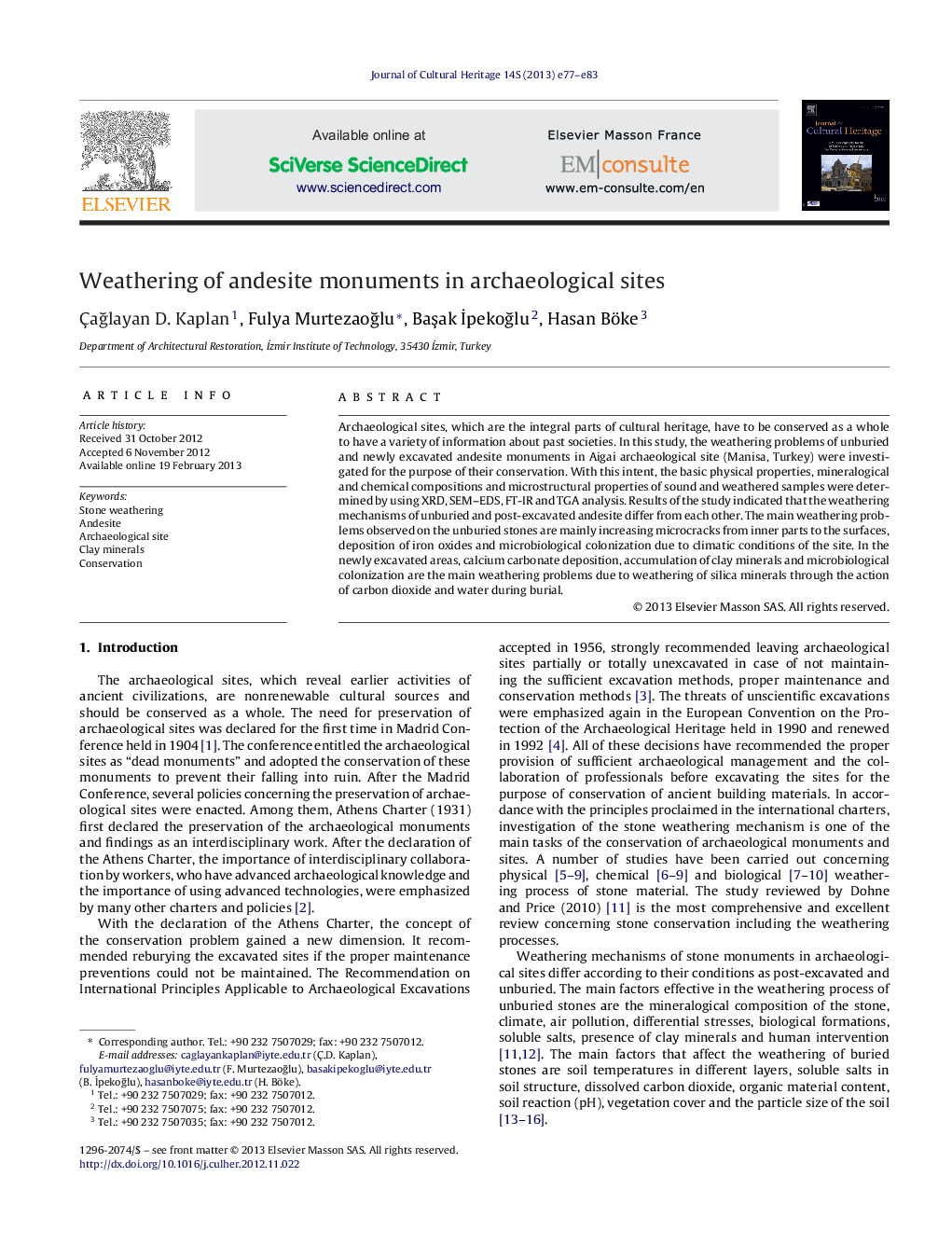| Article ID | Journal | Published Year | Pages | File Type |
|---|---|---|---|---|
| 1038104 | Journal of Cultural Heritage | 2013 | 7 Pages |
Archaeological sites, which are the integral parts of cultural heritage, have to be conserved as a whole to have a variety of information about past societies. In this study, the weathering problems of unburied and newly excavated andesite monuments in Aigai archaeological site (Manisa, Turkey) were investigated for the purpose of their conservation. With this intent, the basic physical properties, mineralogical and chemical compositions and microstructural properties of sound and weathered samples were determined by using XRD, SEM–EDS, FT-IR and TGA analysis. Results of the study indicated that the weathering mechanisms of unburied and post-excavated andesite differ from each other. The main weathering problems observed on the unburied stones are mainly increasing microcracks from inner parts to the surfaces, deposition of iron oxides and microbiological colonization due to climatic conditions of the site. In the newly excavated areas, calcium carbonate deposition, accumulation of clay minerals and microbiological colonization are the main weathering problems due to weathering of silica minerals through the action of carbon dioxide and water during burial.
